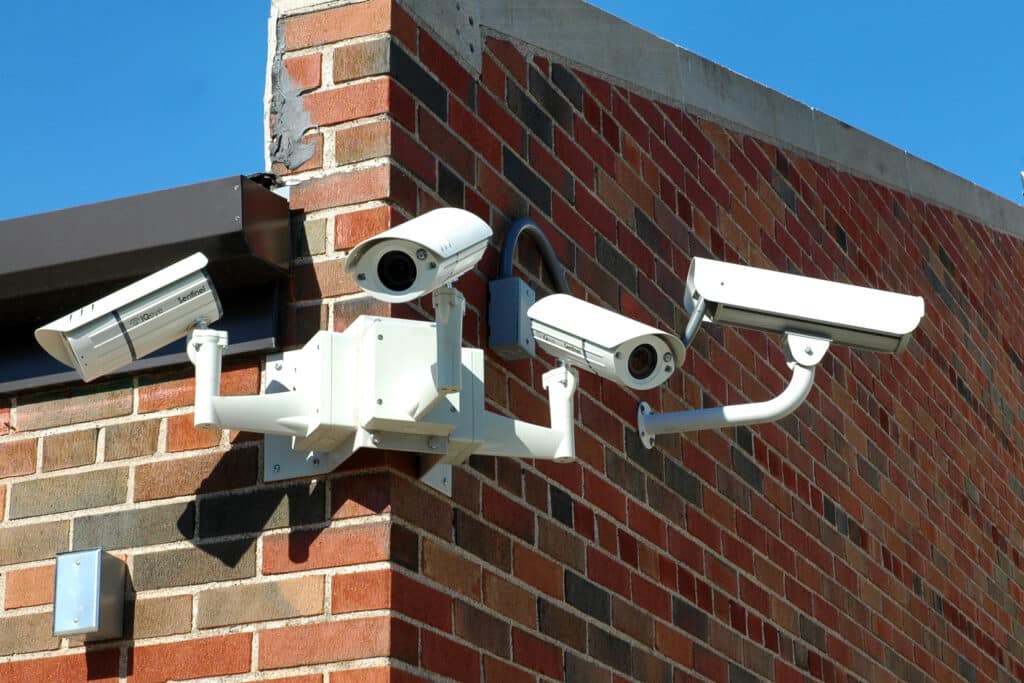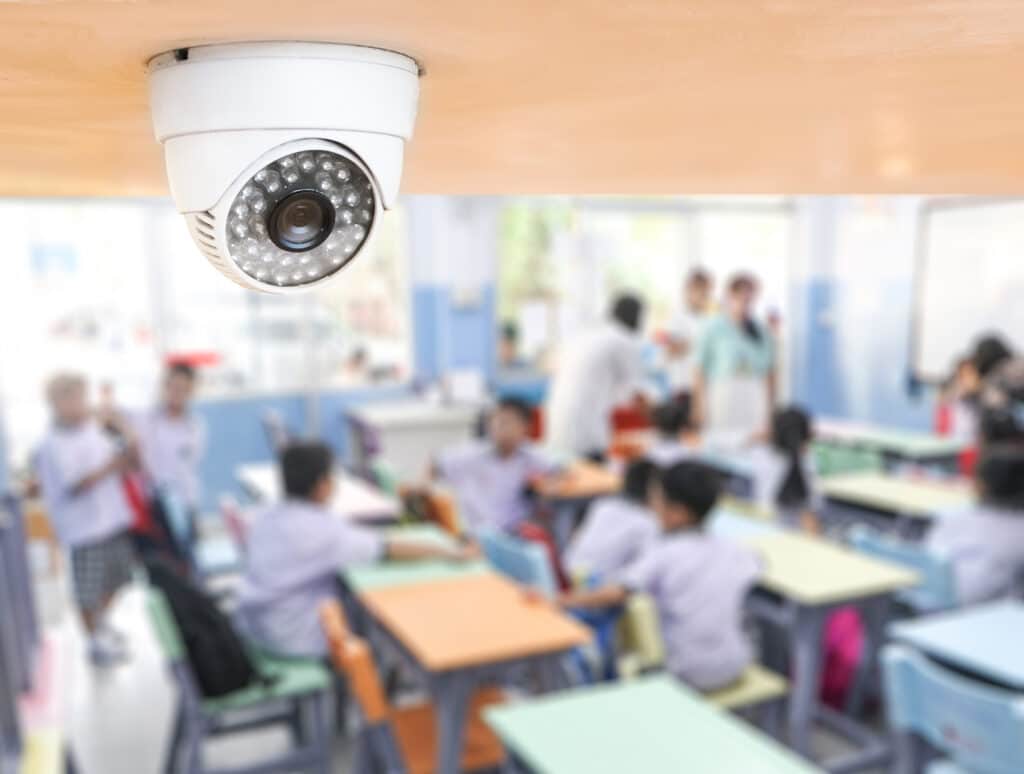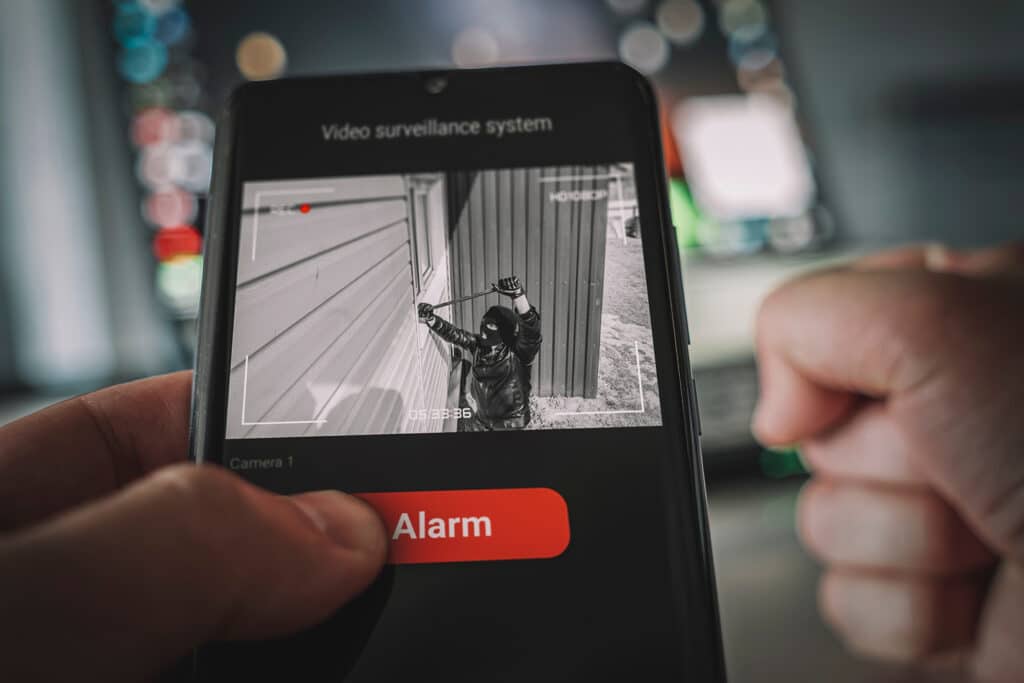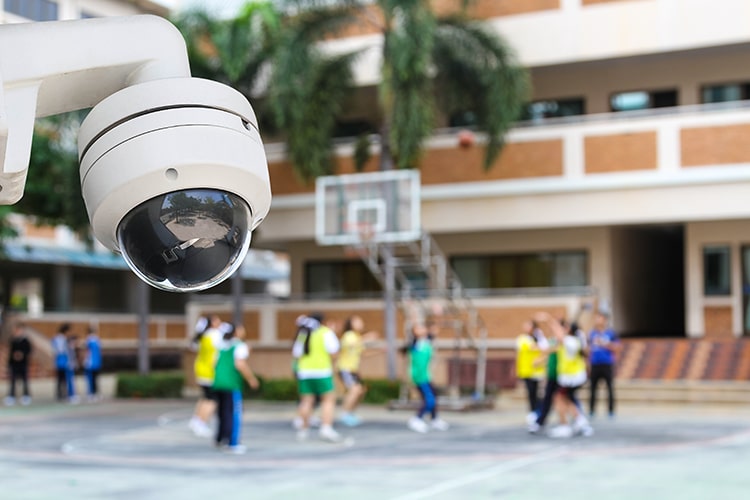Video surveillance is constantly evolving. The ways we can use this cutting-edge technology to secure our school buildings and grounds is a key to ensuring a robust and comprehensive school safety ecosystem. But with innovation, there comes challenges. Knowing the menu of options that exist and selecting which systems are right for your school system can be an overwhelming and daunting task.
For that reason, in this blog, our Eastern DataComm team is tackling the questions you want answered. Read on to explore everything from video management systems to camera resolution and even video analytics. Gain the insight you need to make the best choices for selecting systems that safeguard your learning community as you begin a new school year
The Power of Cutting-Edge Video Surveillance Systems
In today’s world, video surveillance systems are a vital tool for ensuring a school building, its grounds, and everyone within that community’s care are protected. These systems help the people within not only be more secure but feel more secure by providing information that can prevent incidents from occurring. Should an emergency situation or transgression arise, the use of video surveillance lends to proper corrective action. The data provisioned by these systems is essential to responding effectively in the event of an active threat. But how does a school or district find the solution that is the right fit to address the challenges they face? It all begins with a system that’s tailored to match the community’s needs.
When problems develop, video surveillance systems provide the resources to help take action. They provide campus security and authorities with helpful vantage points that visually make clear the magnitude and direction of an evolving situation. The clarity and accuracy of those videos provides those charged with protecting students, staff, and faculty with essential information to aid in the real-time development of a strategy to proactively address a threat.
With the watchful eye of this solution ever-present on your campus, perpetrators are discouraged from bringing misdeeds to completion. However, some with evil intent are never swayed to deviate from their plans. In such circumstances, should a nefarious act come to fruition, video surveillance provides the necessary intelligence for recourse, or even proper legal action.
Clearly, when used correctly, video surveillance solutions are both powerful proactive and retroactive tools. This is why it is essential that schools evaluate the following set of considerations before enhancing or adding a video surveillance to further augment their safety ecosystem.
Video Surveillance Systems: Consider Camera Resolution
One of the most important aspects of an effective surveillance system is camera resolution. The cornerstone of your visual physical security system will be your high-resolution IP cameras and their network-based infrastructure.
For example, first generation video systems or older CCTV systems usually offer lower resolution. This means videos lack detail and sharpness, especially when enlarging a region in the video that is further from the camera. In practice, this means when you zoom in, what you’re left to look at is often blurry and pixelated video. When evaluating threats and maintaining daily safety protocols, these seemingly innocuous issues present a true hindrance to ensuring the protection of your community.
Where these older systems offered about 2 megapixels, the new standard jumps to the 4–12 megapixels range. In fact, some of these newer camera models can house multiple high-resolution sensors in a single unit, allowing them to cover a wider area.
So, when it comes to video resolution, the benefits are easy to see: Increased video detail allows the viewer to recognize potential threats, objects, or actions more efficiently and effectively because they can identify them more clearly.

Video Surveillance: Explore the Benefits of Video Management Systems (VMS)
Having a video surveillance system that features high resolution is a great start. But managing the sheer volume of video data you’ll process over the course of a school year is another facet of system selection worth prioritizing.
A video management system (VMS) is the software that allows you to centralize both the management and control of all video surveillance assets into a single client application or webpage.
From there, you can use the VMS to view both live and recorded video, control the system’s parameters, manage events, alarms, AI analytics, alerts, and configure camera settings.
These systems also integrate with access control systems, environmental sensors, visitor management, and intercom systems. The VMS acts as a single application for managing alarms and events of interest, tying those events to relevant camera views. When an event occurs and video footage is required, the VMS allows users to easily share, and save that footage.
Wondering how your school community can deploy this kind of system? Options offer flexibility to fit your campus needs.
VMSs can be deployed either as hybrid cloud-based solutions or as on-premises solutions.
A cloud-based VMS runs on servers managed by the VMS provider and accessed by the users of the system over the public internet. This can remove some of the burden from your IT and security staff as the cloud provider takes care of the hardware, software updates, maintenance, and most of the configuration.
But the decision is not fully cut and dry. This is because security and privacy concerns should equally be explored when evaluating options. Since the video data is transitioned, and at times, stored on servers outside the user’s control, this may open potential for others outside of your organization to access your surveillance data.
But with that said, the benefits of ease-of-use are strong. Systems are accessed using a web browser and are available wherever there’s an internet connection. So sharing video is a breeze.
In contrast, another option is an on-premises VMS. This video management system runs on the physical servers within the network infrastructure you and your staff manage, giving you full control over your video data. This can be a more secure option because you can restrict access to the public internet. Thus, video is typically only circulated on the internal network.
This approach to video management requires the end users to manage and maintain the software configuration, network, and cameras themselves, which can prove more complex than a cloud solution. Evaluating whether you have the necessary staff and infrastructure in place for such a system is also an important step in the evaluation process.
If you’re wondering what approach is right for you and your school or district, feel free to contact our team here and we’ll help you explore your options to arrive at the right solution.

Video Surveillance: Discover the Latest in Video Analytics
So you have crystal-clear video, a management system that works for your unique needs… what’s next? It’s time to get the most out of your video surveillance system with video analytics.
Video analytics technology enables the extraction of valuable information from video footage without the need for human intervention.
Technological advancement in motion detection allows for real-time reaction to various security issues without the need for human analysis – saving time, reducing resources, and lending to increased accuracy.
It enables your video surveillance system to be proactive, alerting you of potentially problematic situations before they occur. It also simplifies investigations should an unavoidable or unpredictable incident happen.
Artificial intelligence (AI) and computer vision (CV) run on hardware embedded within the cameras. These tools constantly detect and analyze patterns and behaviors in real-time. Schools can use this technology to identify potential threats, such as loitering, fighting, unauthorized access, trespassing, or even detect weapons. The result: The ability to respond quickly and effectively.
Let’s explore a few potential applications of video analytics.

Facial Recognition
Facial recognition identifies people in real-time. This technology can be used to monitor and alert when individuals who have been banned from the school are on property. It can also help administration quickly identify a student or staff member’s last location for attendance or investigational purposes.
Facial recognition can also be used to verify access control activity and prevent the sharing of access cards.
And integration to criminal mugshot databases can also help ensure a safer campus and keep unwanted individuals out of school buildings.
License Plate Recognition
License plate recognition allows schools to identify vehicles in real-time. This technology can be used to monitor parking lots or other areas of traffic. It can identify vehicles that may pose a threat to the school or may be in areas to which they are not authorized to have access.
People and Object Detection
Person and object detection classifies objects and their location within the video. It allows users to filter recorded video by their characteristics, including clothing color, age, and gender.
Animals, vehicles, and specific objects like packages, boxes, or suitcases can be recognized too. And, you can set rules regarding the actions of the detected objects, like issuing alerts when these objects are identified, left behind, or in a location where they shouldn’t be.
Object filters can help speed up investigations and provide immediate actionable alerts. Ultimately, this can greatly improve response by security personnel, preventing further escalation.
Sound Detection
Sound detection utilizes microphones to classify a range of noises. This technology constantly monitors the audio in targeted space. When a specific sound is detected or a particular volume is exceeded, an alert can be generated. In schools, this technology could be used to detect gunshots, yelling, vehicle horns, glass breaking, or a fire alarm.
Weapons Detection
Weapons detection allows for the identification of weapons (guns, knives, etc.) that may threaten the safety of your school community. In this day and age, this technology can provide law enforcement and first responders the details they need to correctly prepare for and respond to an emergent threat. Knowing the exact type of weaponry an assailant employs gives those tasked with neutralizing the situation the best chance possible to adequately address that threat and reduce resulting damage.
Video Surveillance and the Power of Integrations in the School Safety Ecosystem
As you can see, using cutting-edge video surveillance technology with a video management system, video analytics, and strong video resolution can help you to keep your school community connected and protected.
These systems provide a safer environment where you can quickly identify potential threats and respond accordingly. With continued advancements in technology, it’s never been easier to ensure the safety of our schools utilizing modern video surveillance systems. The true challenge is finding the solution that is the right fit for your community’s needs.
If you’d like to learn more about enhancing your school’s video surveillance systems, just reach out to Eastern DataComm today to schedule a customized School Safety Consultation.
… because when it comes to safety, we’re all in this together!
Also Read:


